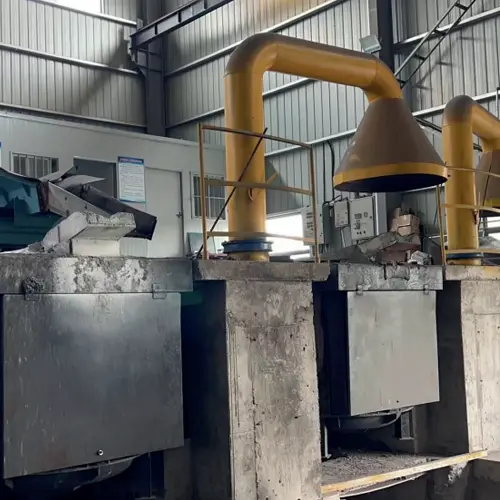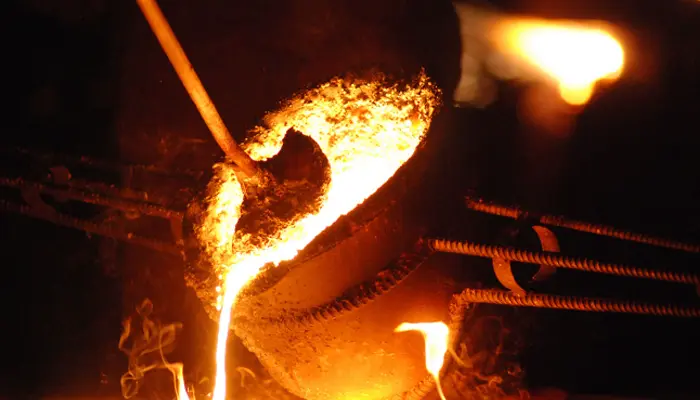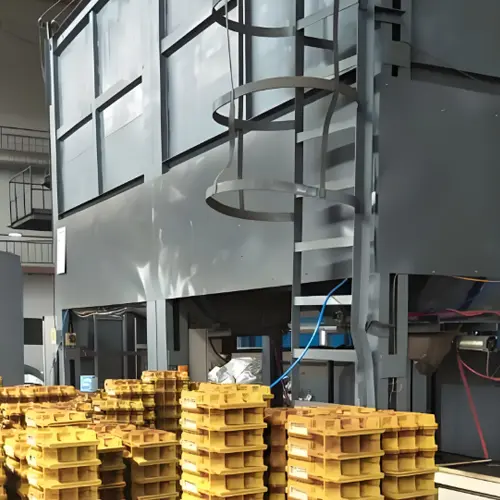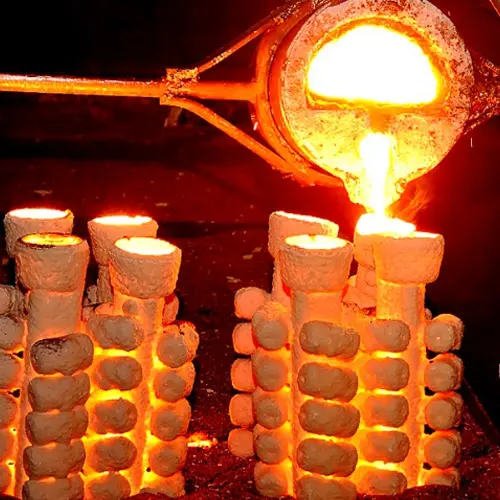The medium frequency induction furnace smelting high-strength gray iron process is a complex and delicate process, involving multiple links such as raw material selection and quality control, furnace charge ratio, smelting process parameter setting and inoculation treatment. This article takes the automobile transmission housing casting as an example to explore the quality control before the furnace.
1. Strictly control the quality of raw and auxiliary materials
1.1 Scrap steel and recycled materials: clean and non-severely rusted scrap steel and recycled materials should be selected. The recycled materials need to be crushed and shot blasted.
1.2 Recarburizer: The selection of recarburizer is crucial to the metallurgical properties of molten iron. High-temperature graphitized recarburizers should be preferred, and their graphite structure helps to improve the nucleation state of molten iron and reduce the tendency of white cast iron. The particle size of the recarburizer needs to be determined according to the furnace diameter and capacity to ensure a good dissolution and diffusion rate.
1.3 Ferroalloys and inoculants: Fixed-point procurement, strive for stable composition and qualified block size (particle size). Classify and stack to avoid moisture.
2. Charge ratio
2.1 Ratio of scrap steel to pig iron: In the charge ratio, more cheap scrap steel and recycled materials should be used, and less or no pig iron should be used. This can reduce production costs and reduce the adverse genetic effects of coarse graphite in pig iron.
2.2 Recarburizer ratio: The amount of recarburizer should be determined according to the target carbon content of molten iron. The higher the recarburization rate, the better the metallurgical properties of molten iron.
3. Composition design
The transmission housing is made of HT250 with a hardness of <200HBW. It is required to be easy to cut and leak-free during oil pressure testing. Add trace amounts of multi-element alloy components to cast iron and select reasonable process parameters to obtain ideal metallographic structure and mechanical properties of the casting.
In the composition design of high-strength low-alloyed inoculated cast iron, the influence of molten iron carbon equivalent and cooling rate should be considered first. If the carbon equivalent is too high, the cooling speed of the thick wall of the casting will be slow, and the thick wall of the casting will easily produce coarse grains and loose structure, and the oil pressure test will easily cause leakage; if the carbon equivalent is too low, hard spots will easily form in the thin wall of the casting, resulting in poor cutting performance. Controlling the carbon equivalent at 3.95-4.05% can ensure the mechanical properties of the material and approach the eutectic point. The solidification temperature range of the molten iron is narrow, which is conducive to eliminating the defects of pores and shrinkage holes in the casting.
Secondly, the role of alloying elements should be considered. In the eutectic transformation of chromium and copper elements, chromium hinders graphitization and promotes white spots on the cross section; while copper promotes graphitization and reduces white spots on the cross section. The interaction between the two elements is neutralized to a certain extent, avoiding the formation of cementite in the eutectic transformation, which leads to white spots on the thin wall of the casting or increased hardness; in the eutectoid transformation, chromium and copper can play a composite role in stabilizing and refining pearlite. The composite addition of chromium and copper can further improve the density of the casting. Therefore, for castings that require leakage resistance, adding an appropriate amount of chromium (0.2-0.3%) and copper (0.3-0.4%) is beneficial to improve the density of the material itself and enhance its leakage resistance.
4. Setting of smelting process parameters
4.1 Melting power: The output of the melting power needs to be determined according to the amount of iron added to the electric furnace. During the smelting process, as the weight of the iron material continues to increase, the melting power should also be gradually increased. This can maximize the thermal efficiency of electric furnace smelting and reduce heat loss.
4.2 Timing of adding carburizer: When there is a certain amount of molten iron in the furnace, it is divided into multiple batches according to the total amount added to each furnace. This can make full use of the electromagnetic stirring effect of the medium frequency electric furnace, which is conducive to the dissolution and diffusion of carbon.
4.3 Temperature control: The temperature of the gray iron melting period should not be too high, generally controlled below 1400℃. After the charge is melted, it is necessary to take samples for quick inspection, and the sampling temperature is controlled at 1420±10℃. After slagging, add the remaining charge such as ferroalloy. The overheating temperature can be controlled at 1510-1530℃, and stand for 5-8 minutes. The furnace temperature must ensure the optimal temperature for inoculation and pouring, which is generally controlled between 1460-1500℃.
4. Inoculation
Inoculation is an important measure to improve the structure and performance of gray cast iron. By adding an appropriate amount of inoculant, the precipitation and refinement of graphite can be promoted, and the strength and hardness of the matrix structure can be improved.
The amount of inoculant added is determined by factors such as the wall thickness, chemical composition and pouring temperature of the shell casting to be produced, with the principle that there is no looseness or leakage in the thick wall and no hard area in the thin wall. Production practice shows that Sr, Ba, Ca, Si-Fe composite inoculant is an ideal inoculant for improving the strength of gray cast iron. This inoculant exerts the strong anti-degradation ability of barium and the strong ability of strontium to eliminate white cast iron.
The use of tapping and pouring secondary stream inoculation can improve the uniformity of graphite distribution inside cast iron, and the A-type graphite has a high occupancy rate, uniform distribution, and moderate length, thereby improving and stabilizing the strength of cast iron.
The molten iron after inoculation should be poured within a limited time, generally not exceeding 10 minutes.
5. Actual production effect
The quality coefficient of the housing casting is significantly improved, no white cast iron is produced in the thin part, the tensile strength of the body reaches above HT250, the hardness is about 190HBw, and the pearlite is 85- 90%, which meets the strength requirements of the transmission housing, and its mechanical properties reach the material level of the transmission housing of similar foreign models.
For more iron casting parts and our foundry, please check below link:





